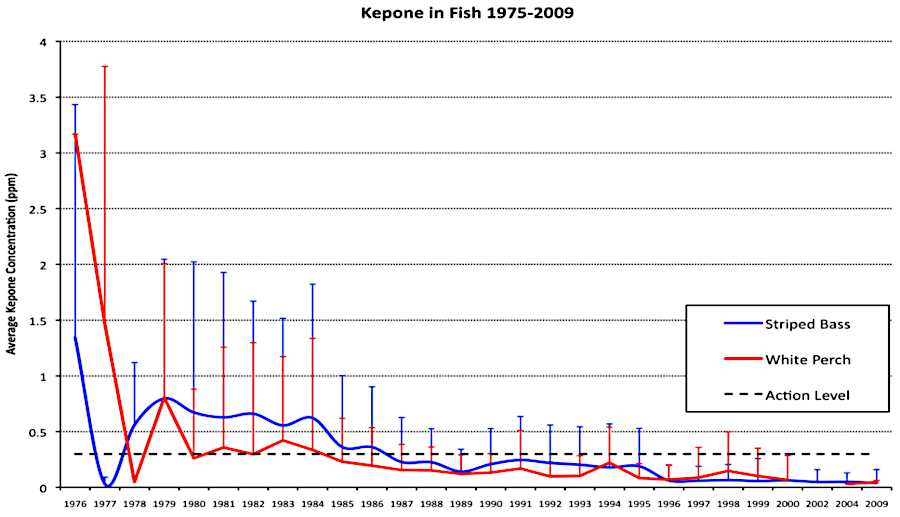
kepone concentrations in fish dropped over time
Source: Virginia Department of Energy, Kepone in the James River Estuary: Past, Current and Future Trends (Figure 2)

kepone concentrations in fish dropped over time
Source: Virginia Department of Energy, Kepone in the James River Estuary: Past, Current and Future Trends (Figure 2)
Allied Chemical and then Life Science Products Company manufactured chlordecone, a pesticde with the brand name of Kepone, at a small plant in Hopewell between 1966-1975. The process created so much dust that workers refered to it as the "flour factory." When workers developed obvious health symptoms, the risks of exposure to the product was revealed.
Kepone was released into the James River primarily through the Hopewell wastewater treatment system. Some flowed via stormwater, and kepone waste was deposited in a local marsh as well.1
Public awareness of the kepone disaster facilitated action by the US Congress. It passed the Toxic Substances Control Act in 1976.1